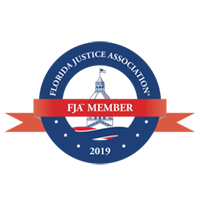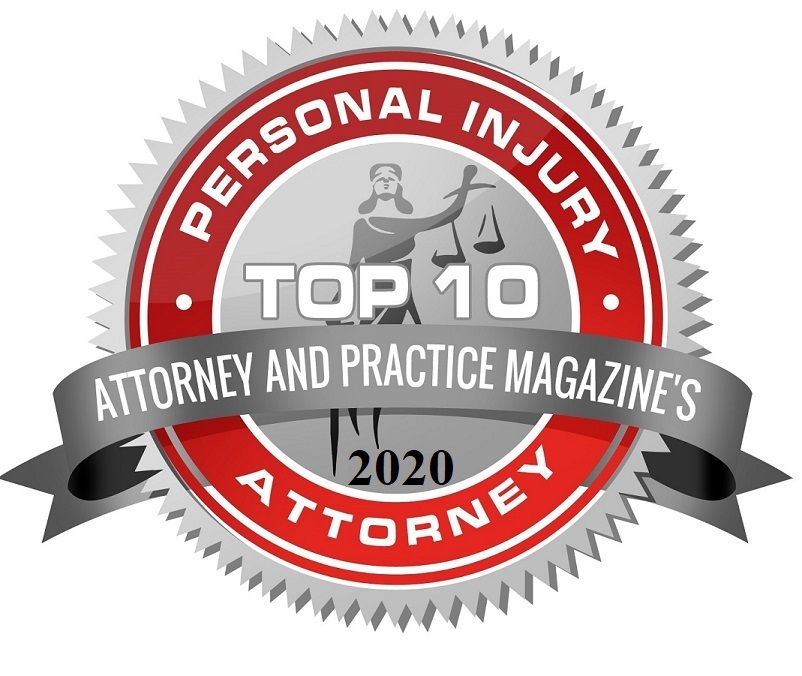Determining who is at fault in a bus accident is crucial for victims seeking compensation for their injuries, but it is rarely straightforward. This post will explore the various factors that influence liability, including driver negligence, company responsibility, vehicle maintenance, and other potential contributors to a crash. Whether you were a passenger on the bus, a pedestrian, or in another vehicle, understanding these elements is vital for protecting your rights and pursuing justice.
Join us as we break down the legal complexities into manageable insights, aiming to empower you with the knowledge needed to navigate the aftermath of a bus accident effectively.






Definition of Liability in Florida Civil Law
In personal injury cases, there are various types of liability that can come into play.
Negligence is the most common basis for liability. It occurs when someone fails to exercise the level of care that a reasonably prudent person would use in similar circumstances. Examples of negligence include car accidents resulting from not obeying traffic laws, slip and fall incidents caused by unaddressed hazards, and medical malpractice where a healthcare provider deviates from standard practices.
Strict liability, on the other hand, does not require proving negligence or fault. It is often applicable in cases involving inherently dangerous activities, such as using explosives, or in product liability claims where harmful products are involved. For instance, a company can be held strictly liable for injuries caused by a defective product they produced or sold, regardless of any negligence on their part.
Vicarious liability is another type of liability where one party is held responsible for the actions of another. This typically includes scenarios where employers are held liable for the actions of their employees if the employees were acting within the scope of their employment at the time of the incident. Similarly, parents can be held liable for the actions of their minor children.
Case Results
Determining Liability in Personal Injury Cases
Determining liability in personal injury cases involves a thorough process that includes several critical steps. The first step is establishing the duty of care. This means proving that the defendant had a legal obligation to act in a manner that would prevent causing harm to the plaintiff. This relationship or circumstance dictates that the defendant was expected to exercise a certain level of care.
Once the duty of care is established, it must then be shown that the defendant breached this duty. This involves demonstrating that the defendant’s actions did not meet the expected standard of care, thereby falling short of what was required to avoid causing harm.
The next step is proving causation. The plaintiff must show that the defendant’s breach of duty directly caused their injury. This requires establishing a clear and direct link between the defendant’s actions and the injury sustained by the plaintiff.
Finally, the plaintiff must demonstrate that they suffered actual damages as a result of the defendant’s actions. These damages can include bodily injury, emotional distress, loss of earnings, or property damage.
In Florida, the comparative negligence rule applies, meaning that if the plaintiff is found partially responsible for their own injuries, their compensation can be reduced by the percentage of their fault. For example, if a plaintiff is found to be 20% at fault in a car accident, their recoverable damages will be reduced by 20%. If the plaintiff is more than 50% at fault, they are barred from pursuing damages.
Understanding liability is crucial for anyone involved in a personal injury claim in Florida. Whether you are a victim seeking compensation or someone who might be held liable, it is essential to comprehend how liability is determined and what it means for your case.
Multi-Collision Car AccidentClient Testimonial
Determining Bus Accident Liability
Bus accidents, although less frequent than car accidents, pose unique challenges when it comes to determining liability. From multiple potential liable parties to specific laws governing public transportation, navigating these cases requires a deep understanding of both state laws and the details of the accident.
Challenges in Determining Liability in Bus Accidents
One of the main challenges in bus accidents is the variety of entities that could potentially be held liable. These can include the bus driver, the company or government entity that operates the bus, other involved drivers, manufacturers of the bus, and even entities responsible for maintaining the roads. Determining who is at fault involves a detailed investigation into the circumstances of the accident.
Liability of Bus Operators
Bus operators, whether they are private companies or public entities, bear a significant responsibility due to their role in transporting numerous passengers. This high standard of care makes them susceptible to liability in various situations.
When a bus accident occurs due to driver negligence—such as speeding, distracted driving, or driving under the influence—the driver can be held accountable. Additionally, the driver’s employer may also be liable under the legal doctrine of “respondent superior,” which holds employers responsible for the actions of their employees performed within the scope of their work duties.
Bus companies are also obligated to ensure regular maintenance of their vehicles. If a failure to conduct necessary maintenance leads to an accident, the company can be held liable for any resulting injuries.
Proper training of bus drivers is another crucial responsibility of bus companies. If inadequate training results in an accident, the company can be found negligent and thus liable.
In cases where an accident is caused by defective bus equipment, such as brake failure or a tire blowout, liability may extend to the manufacturer of the equipment or the bus itself under product liability laws.
Liability in Accidents Involving Buses Owned by Public Transportation Agencies
When a bus involved in an accident is owned by a public transportation agency, determining liability can become more complicated due to sovereign immunity. Sovereign immunity protects government entities from liability in many situations, though exceptions do exist.
In Florida, sovereign immunity is waived to a certain extent under the Florida Tort Claims Act. This act permits lawsuits against government entities for injuries resulting from a bus accident. However, damages are typically capped at $200,000 for one agency and $300,000 if suing multiple agencies.
If the bus accident was caused by the negligence of a government-employed bus driver or due to improper maintenance by the government entity, the agency can be held liable within the limits established by the Florida Tort Claims Act. To successfully hold a public transportation agency liable, it must be demonstrated that the entity acted negligently and that this negligence was the proximate cause of the injuries. This involves gathering substantial evidence, including bus maintenance records, driver training records, and eyewitness testimony.
Determining liability in bus accidents requires a thorough investigation and understanding of various legal principles, especially when the bus is part of a public transportation system. Victims of bus accidents should seek experienced legal representation to navigate these complex issues effectively.
The Four Essential Elements of Personal Injury Law in Bus Accident Lawsuits
In personal injury law including in cases involving bus accidents — there are four essential elements that must be proven to successfully bring a lawsuit. Understanding these elements is crucial for anyone involved in a bus accident who is considering legal action.
Duty of Care
The first element that must be established is the existence of a duty of care. In the context of bus accidents, this duty is inherently present; bus drivers, bus companies, and other related parties (such as maintenance companies) have a responsibility to ensure the safety of passengers and others on the road. This duty extends to operating the bus safely, maintaining the vehicle to prevent mechanical failures, and ensuring that all safety measures are followed.
Breach of Duty
Once a duty of care has been established, it must be shown that there was a breach of this duty. A breach occurs when a party fails to exercise reasonable care to fulfill their duty. Examples of breaching this duty in the context of bus accidents can include a bus driver operating the vehicle while distracted, under the influence of alcohol or drugs, or failing to adhere to traffic laws. It can also include companies failing to conduct necessary maintenance on the bus.
Causation
The third element involves proving causation, which means showing that the breach of duty directly caused the accident and resulting injuries. This step often requires substantial evidence, such as accident reconstruction, witness testimony, and expert opinions to link the negligent actions directly to the accident.
Damages
Finally, the plaintiff must prove that they suffered actual damages due to the accident. This can include physical injuries, emotional distress, medical expenses, lost wages, and more. Documenting these damages through medical records, bills, and employment records is essential to establishing this element.
Types of Damages Awarded in Florida Bus Accident Lawsuits
After establishing the necessary elements of a personal injury lawsuit, it is also important to understand the types of damages that may be awarded if the lawsuit is successful. In Florida, damages in bus accident lawsuits can be categorized into several types:
Economic Damages
These are damages that can be quantified financially and include medical expenses, lost wages, and property damage. Economic damages are meant to compensate the victim for out-of-pocket expenses incurred due to the accident.
Non-Economic Damages
These damages are more subjective and include compensation for pain and suffering, emotional distress, loss of enjoyment of life, and loss of consortium. Non-economic damages are intended to address the non-financial aspects of harm suffered by the victim.
Punitive Damages
In cases where the defendant’s behavior was particularly reckless or egregious, punitive damages may be awarded. These are not meant to compensate the victim but rather to punish the defendant and deter similar conduct in the future. In Florida, punitive damages are capped and subject to specific statutory limitations.
Choosing The Right Personal Injury Attorney Personal Injury Settlement TimelineRelated Videos
Fighting for Bus Accident Victims
The aftermath of a bus accident can be incredibly challenging, not only due to the physical and emotional recovery but also because of the complex legal landscape that must be navigated to secure rightful compensation.
At Serrano Law, we understand the hardships you face following a bus accident and are dedicated to advocating for your rights and fighting for the full compensation you deserve. We are committed to providing you with personalized and compassionate legal assistance throughout your case.
If you or a loved one has been injured in a bus accident, do not hesitate to reach out to us. Contact Serrano Law today for a free consultation to discuss your case. Let us help you navigate this difficult time with the experience and care you deserve.


